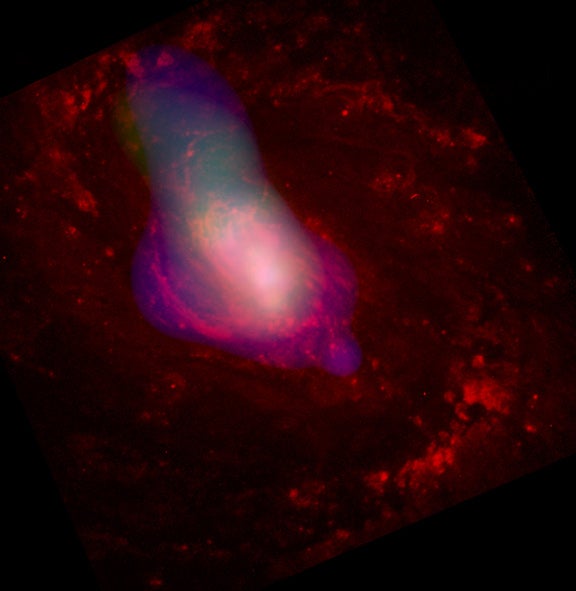M77 (NGC 1068) harbors a central supermassive black hole of about 15 million times the Sun’s mass. As matter spirals into a disk and falls toward the black hole, magnetic fields near the black hole launch jets perpendicular to the accretion disk. // X-ray: NASA/CXC/MIT/UCSB/P. Ogle, et al.; Optical: NASA/STScI/A. Capetti, et al.
In the July 2013 article, “Secrets of the brightest objects in the universe,” I describe what astronomers currently know about quasars, which are the most luminous type of active galactic nuclei (AGNs). However, other AGN classes exist, and many of these are nearer to Earth than quasars. For a sampling of the most beautiful of these objects, click through the gallery below. Because AGNs spew radiation across a wide range of energies — radio waves through X-rays — many of these images are composites of pictures taken with multiple telescopes at different wavelengths.










